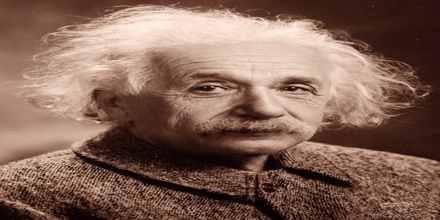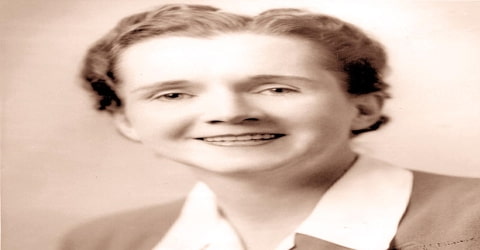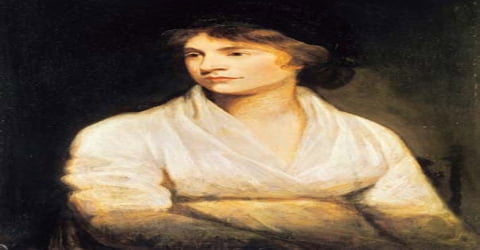Albert Einstein – Physicist (1879-1955)
Full Name: Albert Einstein
Date of Birth: 14 March 1879
Place of Birth: Ulm, Kingdom of Württemberg, German Empire
Date of Death: 18 April 1955 (aged 76)
Place of Death: Princeton, New Jersey, US
Fields: Physics, philosophy
Residence: Germany, Italy, Switzerland, Austria (present-day Czech Republic), Belgium, United States
Spouse: Mileva Marić (1903–1919)
Elsa Löwenthal (1919–1936)
Children: “Lieserl” (1902–1903)
Hans Albert (1904–1973)
Eduard “Tete” (1910–1965)
Early Life

Albert Einstein was born on March 14, 1879, in Ulm, Württemberg, Germany. He was a German-born physicist who developed the special and general theories of relativity and won the Nobel Prize for Physics in 1921 for his explanation of the photoelectric effect. Einstein is generally considered the most influential physicist of the 20th century.
He developed the general theory of relativity, one of the two pillars of modern physics (alongside quantum mechanics). Einstein’s work is also known for its influence on the philosophy of science. Einstein is best known in popular culture for his mass–energy equivalence formula E=mc2, which has been dubbed “the world’s most famous equation”.
Einstein is generally considered the most influential physicist of the 20th century, with his work also having a major impact on the development of atomic energy.
Einstein published more than 300 scientific papers along with over 150 non-scientific works. On 5 December 2014, universities and archives announced the release of Einstein’s papers, comprising more than 30,000 unique documents. Einstein’s intellectual achievements and originality have made the word “Einstein” synonymous with “genius”.
He was visiting the United States when Adolf Hitler came to power in 1933 and, being Jewish, did not go back to Germany, where he had been a professor at the Berlin Academy of Sciences. He settled in the U.S., becoming an American citizen in 1940. On the eve of World War II, he endorsed a letter to President Franklin D. Roosevelt alerting him to the potential development of “extremely powerful bombs of a new type” and recommending that the U.S. begin similar research. This eventually led to what would become the Manhattan Project.
Einstein supported defending the Allied forces, but largely denounced the idea of using the newly discovered nuclear fission as a weapon. Later, with the British philosopher Bertrand Russell, Einstein signed the Russell–Einstein Manifesto, which highlighted the danger of nuclear weapons. Einstein was affiliated with the Institute for Advanced Study in Princeton, New Jersey, until his death in 1955.
Throughout his life, Einstein published hundreds of books and articles. He published more than 300 scientific papers and 150 non-scientific ones. On 5 December 2014, universities and archives announced the release of Einstein’s papers, comprising more than 30,000 unique documents. Einstein’s intellectual achievements and originality have made the word “Einstein” synonymous with “genius”. In addition to the work he did by himself he also collaborated with other scientists on additional projects including the Bose–Einstein statistics, the Einstein refrigerator and others.
Educational and Childhood Career
 (Einstein at the age of 3 in 1882)
(Einstein at the age of 3 in 1882)
Albert Einstein was born on March 14, 1879, in Ulm, Germany, but he grew up and obtained his early education in Munich, Germany. He was a poor student, and some of his teachers thought he might be retarded (mentally handicapped); he was unable to speak fluently (with ease and grace) at age nine.
He began playing the violin at age six and would continue to play throughout his life. At age twelve he discovered geometry (the study of points, lines, and surfaces) and was taken by its clear and certain proofs. Einstein mastered calculus (a form of higher mathematics used to solve problems in physics and engineering) by age sixteen.
 (Albert Einstein in 1893 at the age of 14)
(Albert Einstein in 1893 at the age of 14)
Albert attended a Catholic elementary school in Munich from the age of 5 for three years. At the age of 8, he was transferred to the Luitpold Gymnasium (now known as the Albert Einstein Gymnasium), where he received advanced primary and secondary school education until he left the German Empire seven years later.
Einstein tried to enter the Federal Institute of Technology (FIT) in Zurich, Switzerland, but his knowledge of subjects other than mathematics was not up to par, and he failed the entrance examination. On the advice of the principal, he first obtained his diploma at the Cantonal School in Aarau, Switzerland, and in 1896 he was automatically admitted into the FIT. There he came to realize that he was more interested in and better suited for physics than mathematics.
Einstein passed his examination to graduate from the FIT in 1900, but due to the opposition of one of his professors he was unable to go on to obtain the usual university assistantship.
Working Career
After graduating in 1900, Einstein spent almost two frustrating years searching for a teaching post. He acquired Swiss citizenship in February 1901, but was not conscripted for medical reasons. With the help of Marcel Grossmann’s father, Einstein secured a job in Bern at the Federal Office for Intellectual Property, the patent office, as an assistant examiner – level III.

He evaluated patent applications for a variety of devices including a gravel sorter and an electromechanical typewriter. In 1903, Einstein’s position at the Swiss Patent Office became permanent, although he was passed over for promotion until he “fully mastered machine technology”.
In 1900, Einstein’s paper “Folgerungen aus den Capillaritätserscheinungen” (“Conclusions from the Capillarity Phenomena”) was published in the prestigious Annalen der Physik. On 30 April 1905, Einstein completed his thesis, with Alfred Kleiner, Professor of Experimental Physics, serving as pro-forma advisor. As a result, Einstein was awarded a PhD by the University of Zürich, with his dissertation entitled, “A New Determination of Molecular Dimensions.”
The theory of relativity came from Einstein’s search for a general law of nature that would explain a problem that had occurred to him when he was sixteen: if one runs at, say, 4 4 miles per hour (6.4 kilometers per hour) alongside a train that is moving at 4 4 miles per hour, the train appears to be at rest; if, on the other hand, it were possible to run alongside a ray of light, neither experiment nor theory suggests that the ray of light would appear to be at rest.
Einstein realized that no matter what speed the observer is moving at, he must always observe the same velocity of light, which is roughly 186,000 miles per second (299,274 kilometers per second). He also saw that this was in agreement with a second assumption: if an observer at rest and an observer moving at constant speed carry out the same kind of experiment, they must get the same result. These two assumptions make up Einstein’s special theory of relativity. Also in 1905 Einstein proved that his theory predicted that energy (E) and mass (m) are entirely related according to his famous equation, E=mc 2 . This means that the energy in any particle is equal to the particle’s mass multiplied by the speed of light squared.
In 1909, after serving as a lecturer at the University of Bern, Einstein was called as an associate professor to the University of Zurich. Two years later he was appointed a full professor at the German University in Prague, Czechoslovakia. Within another year-and-a-half Einstein became a full professor at the FIT. Finally, in 1913 the well-known scientists Max Planck (1858–1947) and Walther Nernst (1864–1941) traveled to Zurich to persuade Einstein to accept a lucrative (profitable) research professorship at the University of Berlin in Germany, as well as full membership in the Prussian Academy of Science. He accepted their offer in 1914, saying, “The Germans are gambling on me as they would on a prize hen. I do not really know myself whether I shall ever really lay another egg.” When he went to Berlin, his wife remained behind in Zurich with their two sons; they divorced, and Einstein married his cousin Elsa in 1917.

In 1920 Einstein was appointed to a lifelong honorary visiting professorship at the University of Leiden in Holland. In 1921 and 1922 Einstein, accompanied by Chaim Weizmann (1874–1952), the future president of the state of Israel, traveled all over the world to win support for the cause of Zionism (the establishing of an independent Jewish state). In Germany, where hatred of Jewish people was growing, the attacks on Einstein began. Philipp Lenard and Johannes Stark, both Nobel Prize–winning physicists, began referring to Einstein’s theory of relativity as “Jewish physics.” These kinds of attacks increased until Einstein resigned from the Prussian Academy of Science in 1933.
Einstein visited New York City for the first time on 2 April 1921, where he received an official welcome by Mayor John Francis Hylan, followed by three weeks of lectures and receptions. He went on to deliver several lectures at Columbia University and Princeton University, and in Washington he accompanied representatives of the National Academy of Science on a visit to the White House. On his return to Europe he was the guest of the British statesman and philosopher Viscount Haldane in London, where he met several renowned scientific, intellectual and political figures, and delivered a lecture at King’s College London.
In 1922, his travels took him to Asia and later to Palestine, as part of a six-month excursion and speaking tour, as he visited Singapore, Ceylon and Japan, where he gave a series of lectures to thousands of Japanese. After his first public lecture, he met the emperor and empress at the Imperial Palace, where thousands came to watch. In a letter to his sons, Einstein described his impression of the Japanese as being modest, intelligent, considerate, and having a true feel for art.
In 1917, Einstein applied the general theory of relativity to the structure of the universe as a whole. He discovered that the general field equations predicted a universe that was dynamic, either contracting or expanding. As observational evidence for a dynamic universe was not known at the time, Einstein introduced a new term, the cosmological constant, to the field equations, in order to allow the theory to predict a static universe. The modified field equations predicted a static universe of closed curvature, in accordance with Einstein’s understanding of Mach’s principle in these years. This model became known as the Einstein World or Einstein’s static universe.
Einstein was displeased with quantum theory and quantum mechanics (a theory he had helped create), despite its acceptance by other physicists, stating that God “is not playing at dice.” Einstein continued to maintain his disbelief in the theory, and attempted unsuccessfully to disprove it until he died at the age of 76.
Einstein played a key role (1939) in the construction of the atomic bomb by signing a famous letter to President Franklin D. Roosevelt (1882–1945). It said that the Germans had made scientific advances and that it was possible that Adolf Hitler (1889–1945, the German leader whose actions led to World War II (1939–45)), might become the first to have atomic weapons. This led to an all-out U.S. effort to construct such a bomb. Einstein was deeply shocked and saddened when his famous equation E=mc 2 was finally demonstrated in the most awesome and terrifying way by using the bomb to destroy Hiroshima, Japan, in 1945. For a long time he could only utter “Horrible, horrible.”
Personal Life
Albert Einstein was born in Ulm, in the Kingdom of Württemberg in the German Empire, on 14 March 1879. His parents were Hermann Einstein, a salesman and engineer, and Pauline Koch. In 1880, the family moved to Munich, where Einstein’s father and his uncle Jakob founded Elektrotechnische Fabrik J. Einstein & Cie, a company that manufactured electrical equipment based on direct current.
While attending school in Zurich, Einstein developed lasting friendships and alliances, also meeting his future wife, Mileva Maric, a Serbian physics student.
 (Einstein with his 1st wife Mileva Maric)
(Einstein with his 1st wife Mileva Maric)
Einstein continued to grow closer to Maric, but his parents were strongly against the relationship due her ethnic background. Nonetheless, Einstein continued to see her, with the two developing a correspondence via letters in which he expressed many of his scientific ideas.
In 1902 the couple had a daughter, Lieserl, who might have been later raised by Maric’s relatives or given up for adoption.
Einstein and Marić married in January 1903. In May 1904, their first son, Hans Albert Einstein, was born in Bern, Switzerland. Their second son, Eduard, was born in Zürich in July 1910. In April they moved to Berlin. After a few months his wife returned to Zürich with their sons, after learning that Einstein’s chief romantic attraction was his first and second cousin Elsa. They divorced on 14 February 1919, having lived apart for five years. Eduard, whom his father called “Tete” (for petit), had a breakdown at about age 20 and was diagnosed with schizophrenia. His mother cared for him and he was also committed to asylums for several periods, finally being committed permanently after her death.
 (Einstein with his wife Elsa)
(Einstein with his wife Elsa)
Einstein married Elsa Löwenthal in 1919, after having had a personal relationship with her since 1912. She was a first cousin maternally and a second cousin paternally. In 1933, they emigrated to the United States. In 1935, Elsa Einstein was diagnosed with heart and kidney problems; she died in December 1936.
Death
On April 17, 1955, while working on a speech to honor Israel’s seventh anniversary, Einstein suffered an abdominal aortic aneurysm. He was taken to the University Medical Center at Princeton for treatment but refused surgery, believing that he had lived his life and was content to accept his fate.
Einstein died at the university medical center early the next morning—April 18, 1955—at the age of 76.
During the autopsy, the pathologist of Princeton Hospital, Thomas Stoltz Harvey, removed Einstein’s brain for preservation without the permission of his family, in the hope that the neuroscience of the future would be able to discover what made Einstein so intelligent. Einstein’s remains were cremated and his ashes were scattered at an undisclosed location.

Honours and Awards
Einstein received numerous awards and honors and in 1922 he was awarded the 1921 Nobel Prize in Physics “for his services to Theoretical Physics, and especially for his discovery of the law of the photoelectric effect.” None of the nominations in 1921 met the criteria set by Alfred Nobel, so the 1921 prize was carried forward and awarded to Einstein in 1922.

- Barnard Medal (1920)
- Matteucci Medal (1921)
- ForMemRS (1921)
- Copley Medal (1925)
- Gold Medal of the Royal Astronomical Society (1926)
- Max Planck Medal (1929)
- Time Person of the Century (1999)
















